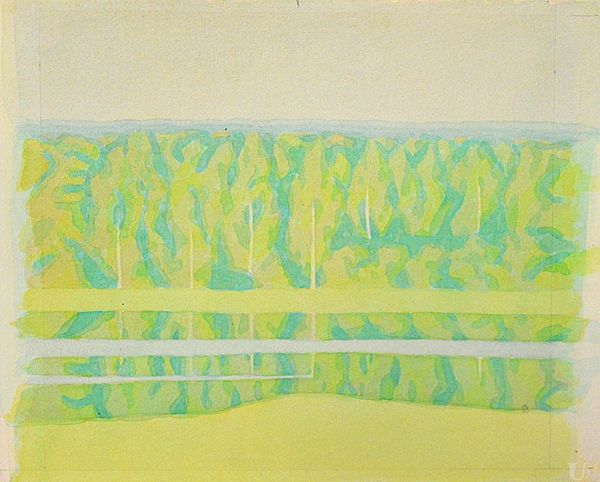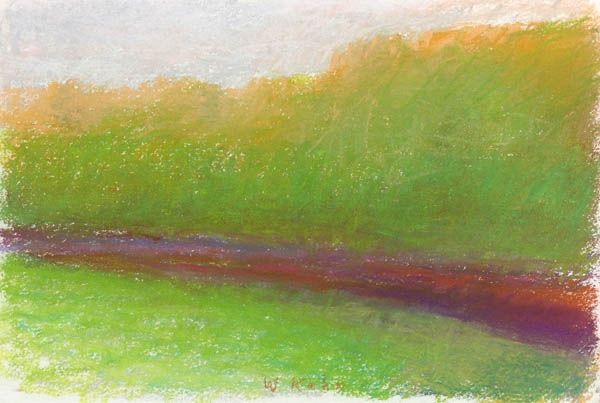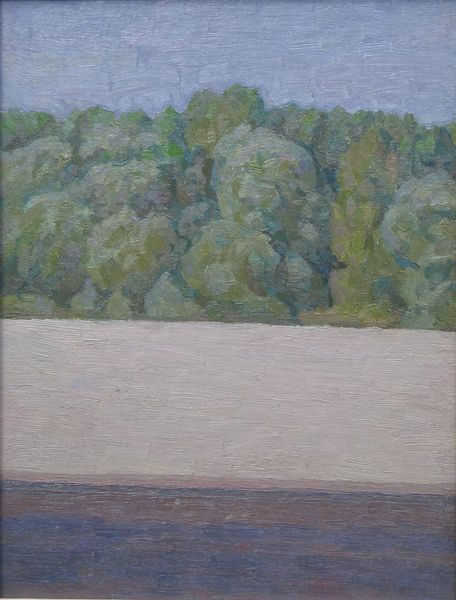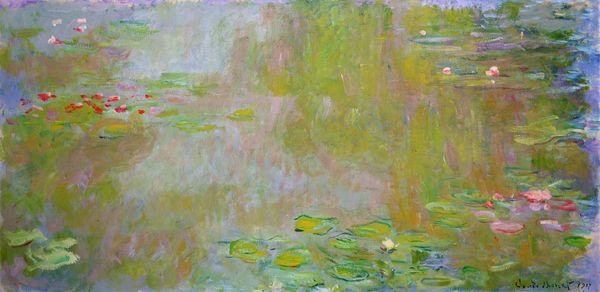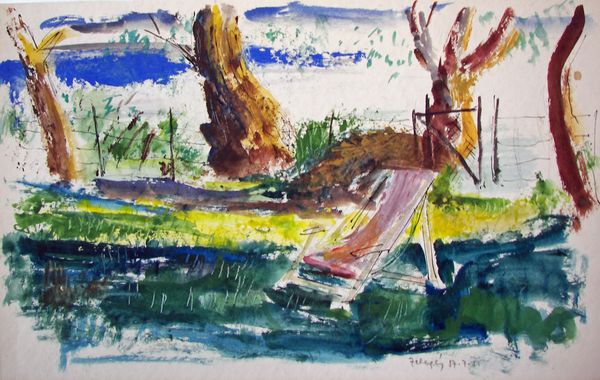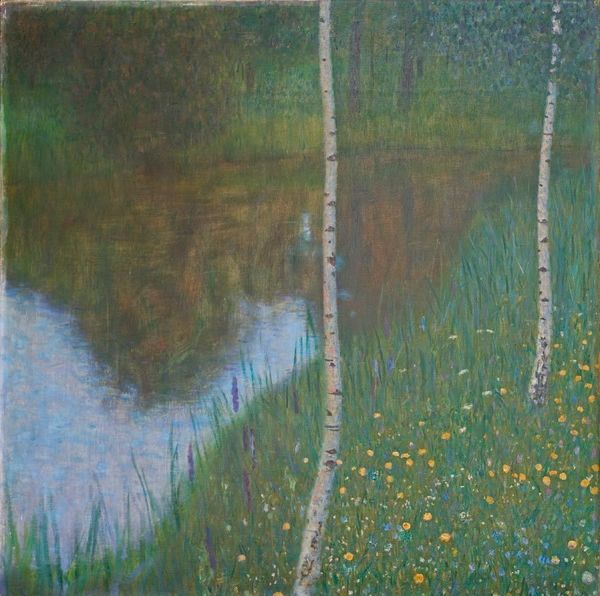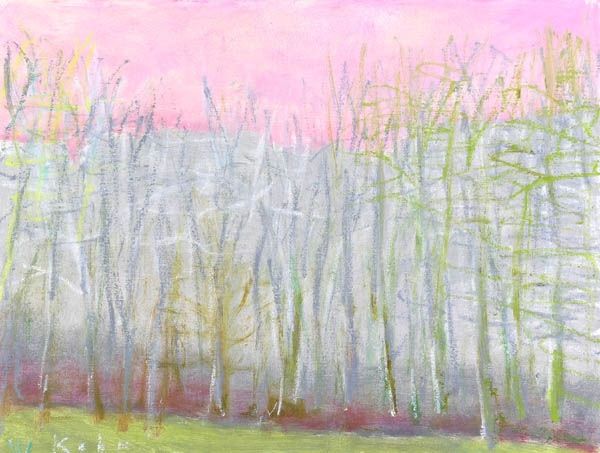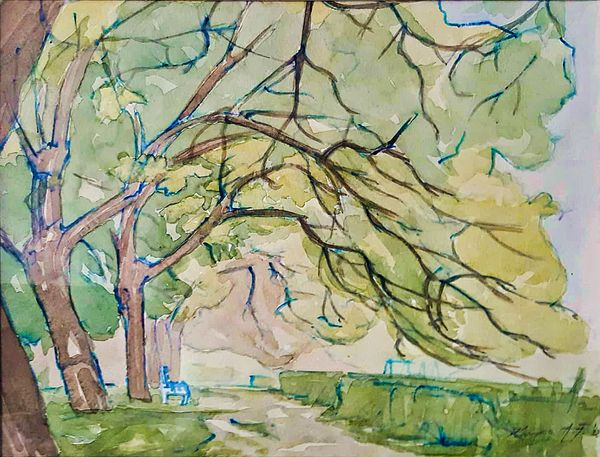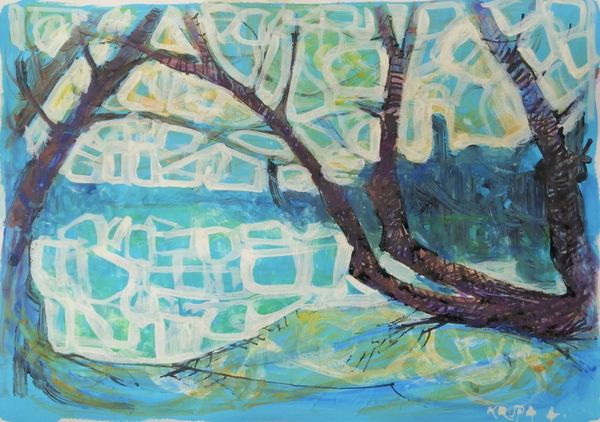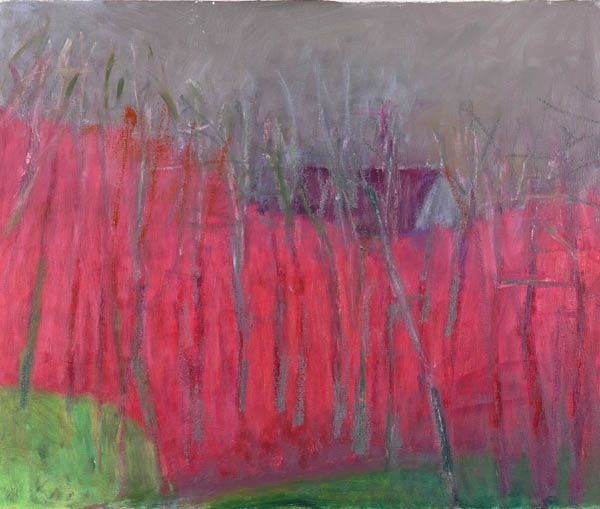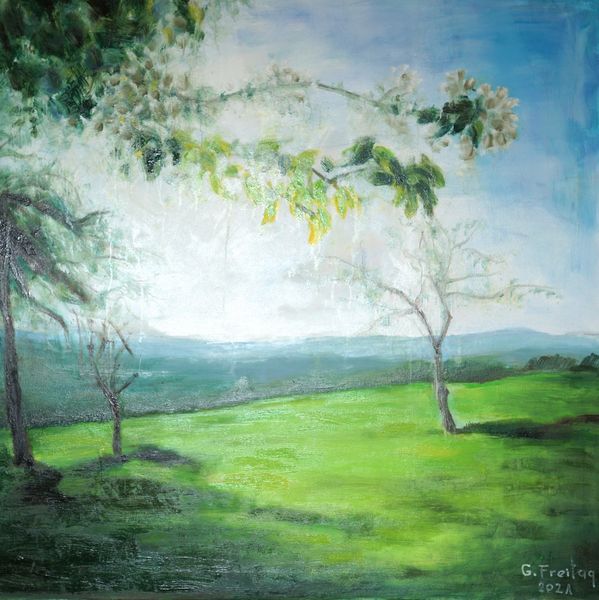
Illustration to Sergey Yesenin's collection of poems 'Bird-cherry tree' 1970
0:00
0:00
hryhoriihavrylenko
Lebedyn Municipal Art Museum, Lebedyn, Ukraine
drawing, pencil
#
drawing
#
landscape
#
pencil
#
abstraction
#
line
#
abstract art
#
watercolor
Copyright: Hryhorii Havrylenko,Fair Use
Editor: So, this drawing is "Illustration to Sergey Yesenin's collection of poems 'Bird-cherry tree'" by Hryhorii Havrylenko, created in 1970. It's a pencil drawing, and it has a simple, almost dreamlike quality to it. How do you interpret this work, especially considering its title and context? Curator: It's fascinating to consider this illustration in relation to both Yesenin's poetry and the Soviet cultural landscape of the 1970s. Yesenin’s work often explored themes of rural life, nostalgia, and the impact of industrialization on the Russian identity. How do you see that reflected here? Is it romanticized, or is there a tension present? Editor: I can definitely see a connection to rural life in the landscape, but there's also something slightly detached about it, maybe even a little melancholic, which could relate to the themes you mentioned. The abstractness distances it from feeling purely celebratory. Curator: Precisely. And that distance might speak to the complexities of representing rural life within a Soviet context, where there was often pressure to portray progress and modernization. Do you think the artistic style—the seemingly naive application of pencil—could be a subtle act of resistance, reclaiming a simpler, more personal mode of expression? Editor: That's a really interesting point! Maybe the apparent simplicity is actually a way of sidestepping those expectations and creating something more authentic. Curator: Think about the bird-cherry tree itself, often a symbol of beauty and fragility in Russian culture. Is Havrylenko highlighting that fragility as a comment on the societal pressures of the time? Considering how art was used to propagate the cultural values of the Communist regime in the Soviet Union, is there an unspoken rebellion or call for freedom? Editor: Wow, I hadn't considered it that way. Now I see this drawing as much more than just a pretty landscape. I'm getting a sense of the deeper meanings embedded in seemingly simple artistic choices. Curator: Exactly. And by asking these questions, we uncover layers of meaning, seeing the art as a product and a commentary of its time. Hopefully, this opens our understanding of art's capability of carrying messages and historical context, while influencing culture.
Comments
No comments
Be the first to comment and join the conversation on the ultimate creative platform.
